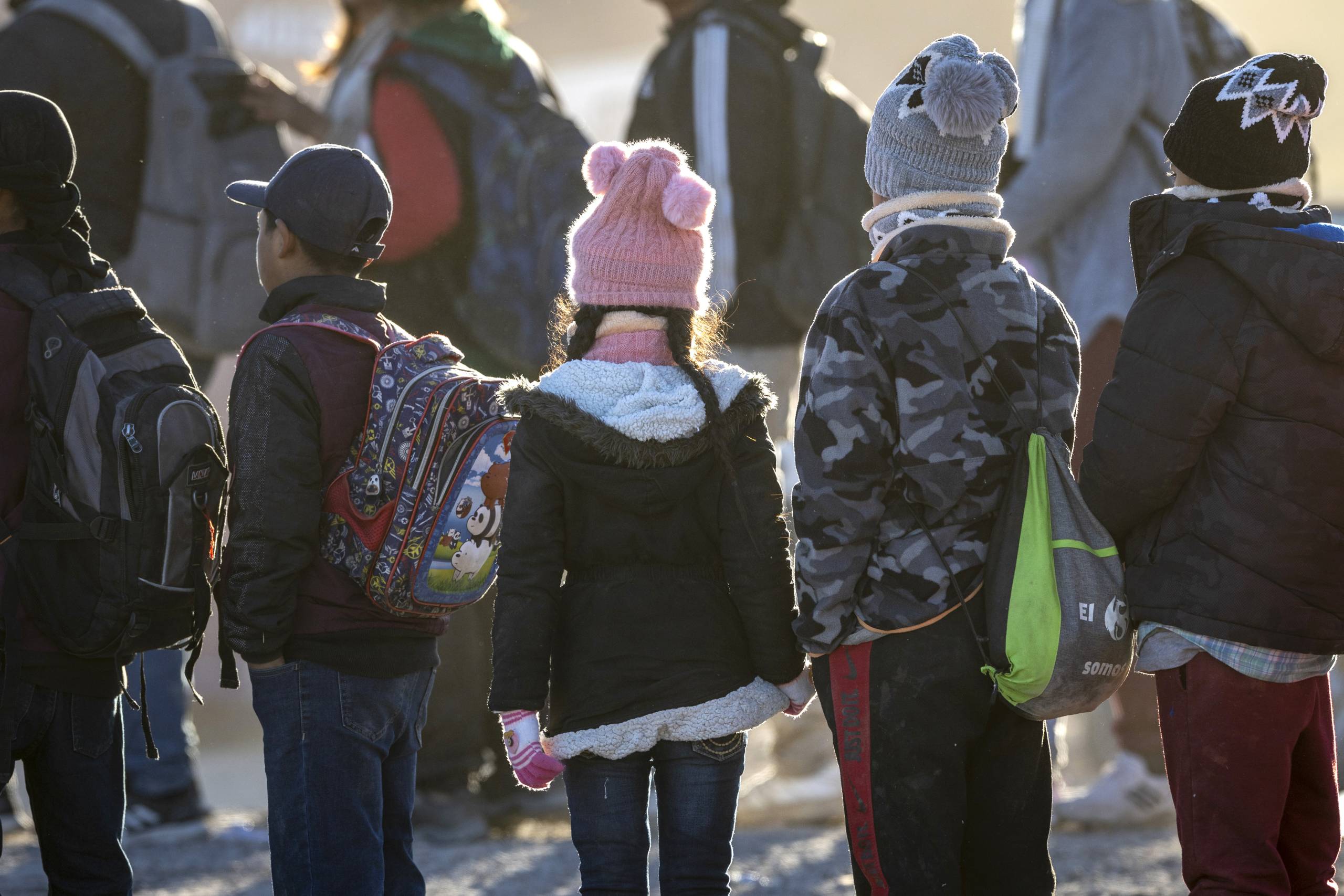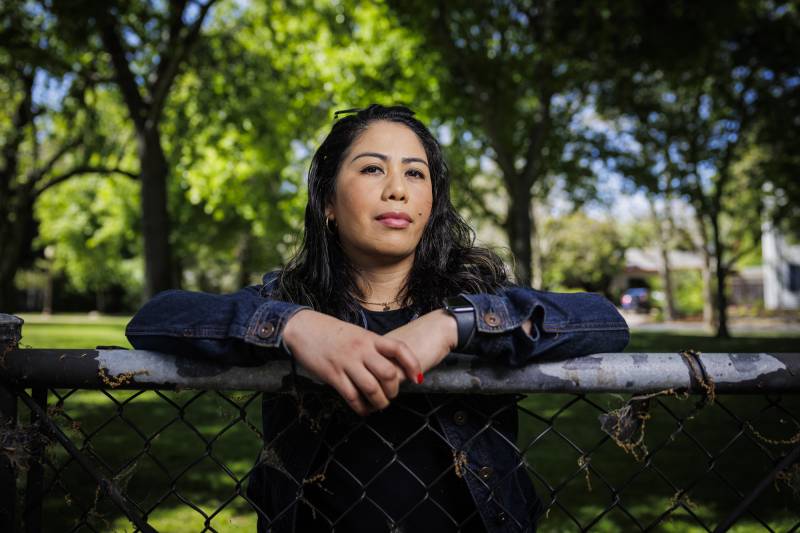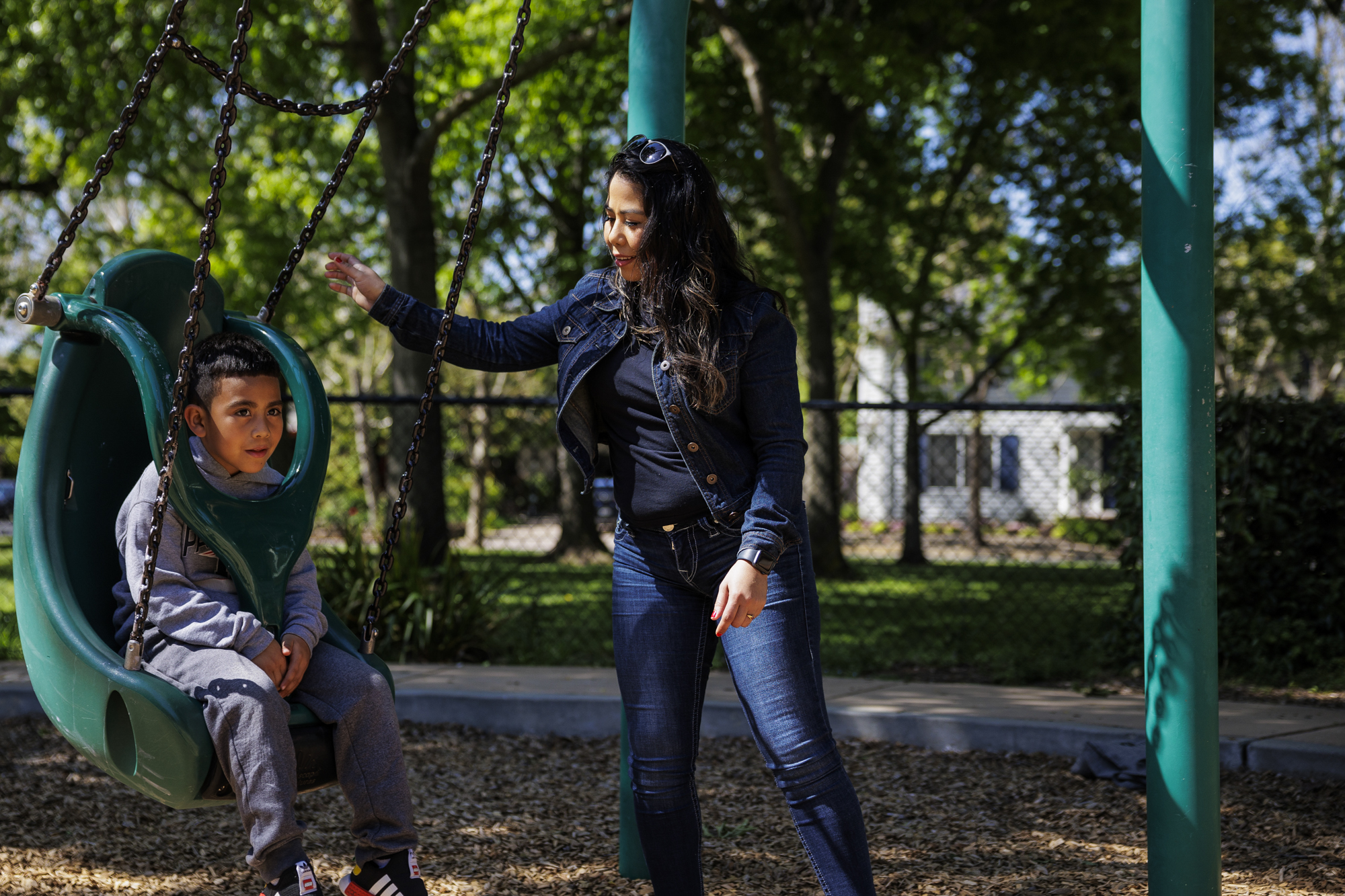In her driveway in East Palo Alto, Norma Lima watched her two boys zip around on their scooters in the spring sunshine. After years of separation from her younger son, it gave her a thrill to see Diego, 6, playing with his 10-year-old brother José.
Lima used to be a police officer in her native El Salvador. But in 2019, facing death threats from an organized criminal gang, she fled and sought asylum at the U.S.-Mexico border. Knowing she couldn’t manage the dangerous journey from El Salvador to the U.S. with two young children, she took only José with her. She left Diego, still in diapers, with his grandmother, not knowing how they’d ever reunite.
Then, last fall, Diego was approved to come join her in the U.S. with refugee status under something called the Central American Minors program (CAM). In September, he boarded a plane in San Salvador, and Lima met him at San Francisco International Airport with their first hug in four years.
“It’s so immense,” Lima said. “I’ll be forever grateful.”
At a time when thousands of unaccompanied children are showing up at the U.S.-Mexico border every month, the Biden administration has been trying to build an alternative pathway through CAM. But just as the program, which started under President Barack Obama, has gotten reestablished, supporters and critics alike question whether it will survive this year’s presidential election.
What is the Central American Minors program?
The CAM program was created in 2014 during the Obama administration when the number of children traveling alone into the U.S. first spiked. A then-record 68,000 unaccompanied kids arrived at the border that year, most from the tumultuous countries of Central America’s “Northern Triangle.”
The idea was to let parents who were already lawfully in the U.S. bring the children they had left behind in Guatemala, Honduras or El Salvador through a safe, legal pathway, as well as certain adult siblings and caretakers with them. This, the administration hoped, would deter desperate parents from putting their kids into the hands of smugglers.

However, the history of the program has been rocky.
Over the final two years of the Obama administration, more than 6,000 CAM applications were approved. However, soon after Donald Trump became president, he ended the program as part of a broad crackdown on immigration.
Then, in 2021, President Joe Biden brought it back, saying CAM “reflects our values as a nation” by protecting vulnerable children. It was also part of a comprehensive approach to managing the current surge of migration in the Americas.
It’s unclear how many kids have come through CAM since the program restarted because the government has not been forthcoming with data. But the number must be tiny when compared to the 137,000 unaccompanied minors encountered at the border last year.
A spokesman for the U.S. State Department said more than 800 people have come into the U.S. as refugees under CAM since 2021. In addition, those who don’t qualify for refugee status (which offers legal permanent residence and eventual citizenship) are considered for a temporary status called humanitarian parole. Advocates estimate that roughly twice as many people are approved for parole as refugee status. However, the agency that handles parole, U.S. Citizenship and Immigration Services, declined KQED’s request for data on the program.
The lucky and the not-so-lucky
As Diego and José chased each other around the driveway, Lima stood on her porch and spoke in a hushed voice about the death threats that led her to leave her toddler behind in El Salvador.
Her city, Santa Ana, was dominated by gangs, and her work as a police officer made her a target. After a warning from colleagues, she said, she began moving where she slept — at the police station, at her parents’ home — but gang members tracked her down and threatened her directly.
Finally, she said, she turned in her badge and her uniform, scraped together money for a smuggler, and prepared for a risky journey to reach her sister in California.
“I knew if I had to run, my older boy could run with me. But I couldn’t carry one in my arms and hold the other by the hand,” she said. “It was the hardest decision I’ve ever made.”


